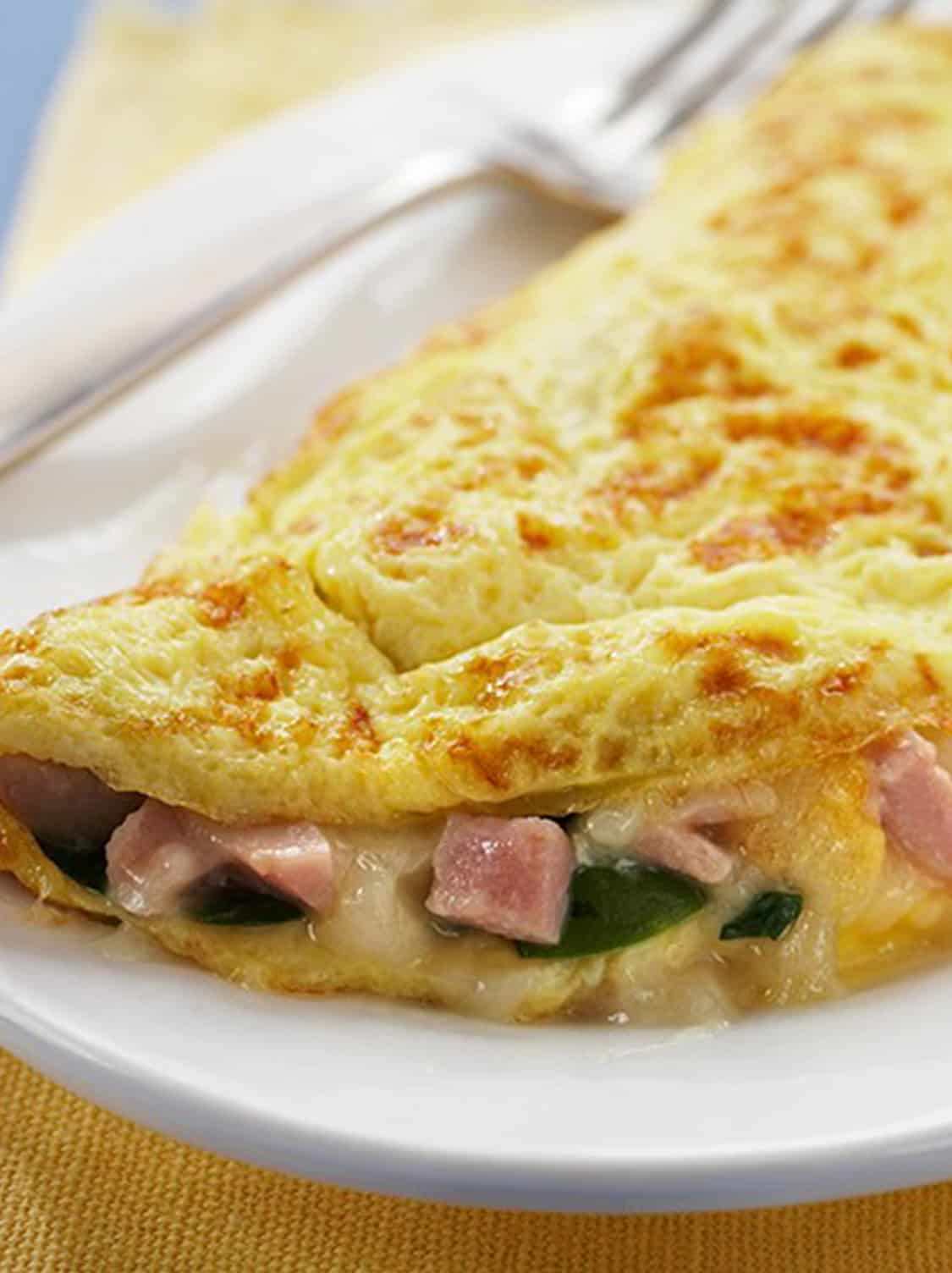

Directions
BEAT eggs, water, salt and pepper in small bowl until blended.
HEAT butter in 6 to 8-inch nonstick omelet pan or skillet over medium-high heat until hot. TILT pan to coat bottom. POUR egg mixture into pan. Mixture should set immediately at edges.
Gently PUSH cooked portions from edges toward the center with inverted turner so that uncooked eggs can reach the hot pan surface. CONTINUE cooking, tilting pan and gently moving cooked portions as needed.
When top surface of eggs is thickened and no visible liquid egg remains, PLACE filling on one side of the omelet. FOLD omelet in half with turner. With a quick flip of the wrist, TURN pan and INVERT or SLIDE omelet onto plate. SERVE immediately.
Ingredients
- 2 large EGGS
- 1/8 tsp. salt
- Dash pepper
- 1 tsp. butter
- 1/3 cup filling, such as shredded cheese, finely chopped ham
Tips
This French omelet recipe is a classic and versatile favorite. Fill with cheese and ham or change it up by adding leftover cooked vegetables.
Invent your own fillings. Some classic omelet fillings include shredded cheddar or Gruyere cheese, sour cream, diced ham, crisp bacon, sautéed mushrooms, bell peppers or tomatoes, caramelized onions, fresh herbs or even leftovers from last night’s dinner.
For a sweet omelet, omit pepper and add a dash of sugar to egg mixture. Fill with preserves, finely chopped toasted nuts or berries; dust with powdered sugar. For an elegant touch, spoon a tablespoon of warmed Cognac or Grand Marnier over and flambé.
Prepare filling first. French omelets cook so quickly, any fillings should be ready to go before starting the eggs. Plan on 1/3 to 1/2 cup filling per 2-egg omelet. Raw foods should be cooked. Refrigerated foods should be heated. Shredded cheese and room temperature foods, such as jams and jellies, are fine as is. Pieces should be small to prevent tearing the omelet when it’s folded.
Made-to-order: French omelets are best cooked one at a time and served immediately.
For more servings, multiply the French omelet recipe as needed, preparing only as many eggs as you will use in a short time. Use 1/2 cup egg mixture per omelet.
Omelet pans are shallow and have sloped sides – designed for ease of moving the omelet mixture during cooking and for sliding the finished omelet out. If you don’t have an omelet pan, it’s best to use a heavy skillet with sloping sides.
For beginners: 1/3 to 1/2 cup filling for a 2-egg omelet can be difficult to manage at first. Try putting only half the filling inside the French omelet. Spoon the rest across the top of the omelet after it’s on the plate.
This recipe is an excellent source of protein, vitamin A and choline, and a good source of vitamin D and folate.
Per serving: 1 recipe (without filling ingredients)
- Calories 178
- Total fat 13 g
- Saturated fat 6 g
- Polyunsaturated fat 2 g
- Monounsaturated fat 5 g
- Cholesterol 382 mg
- Sodium 463 mg
- Carbohydrates 1 g
- Fiber 0 g
- Protein 0 g
- Vitamin A 193 mcg
- Vitamin D 2 mcg
- Folate 47 mcg
- Choline 295 mg
- Calcium 59 mg
- Iron 2 mg
- Potassium 143 mg
To ensure food safety, eggs should be cooked until both the yolk and the white are firm. Consuming raw or undercooked eggs may increase your risk of foodborne illness, especially for those with certain medical conditions. For recipes that call for eggs that are raw or undercooked when the dish is served, use either pasteurized shell eggs that have been treated to destroy Salmonella, or use pasteurized egg products.
